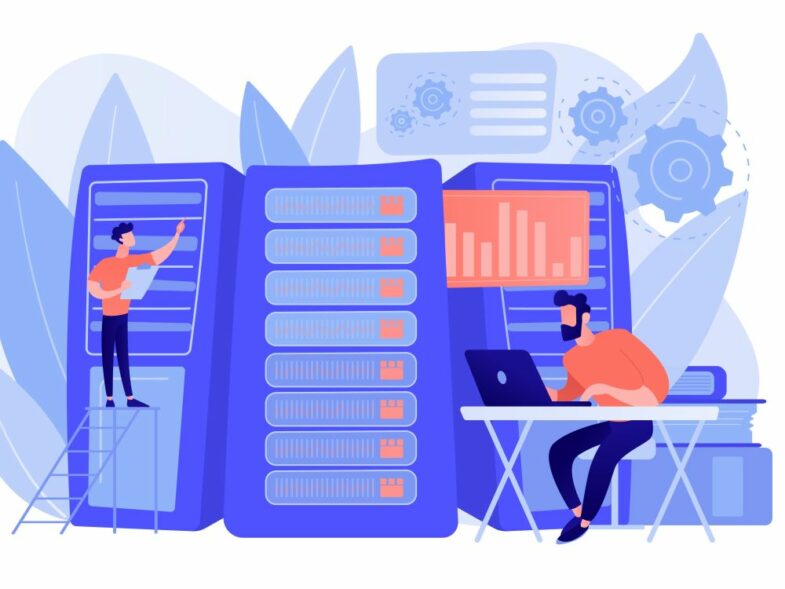When it comes to running a website, nothing kills engagement faster than poor performance. You could have the most compelling design or the sharpest content on the internet, but if your pages lag, crash, or load inconsistently across devices or locations, you’re going to lose visitors faster than you can say 404 error.
Performance is not just speed. It’s about security, user trust, reliability, and accessibility. But don’t worry, here are some solutions to make your website optimized, no matter if you are building it for business or for personal enjoyment.
Prioritize privacy compliance without compromising speed
What people are looking at in websites isn’t speed only. They want to know what is going on with their data and how well it’s protected. So, it’s more about privacy and transparency. Fortunately, there are regulations like the California Consumer Privacy Act (CCPA) so now you can offer users more control over their data. This might sound like a boulder on your path of success, but it’s actually a chance to improve trust while keeping the performance intact.
Using a well-structured Usercentrics consent management platform CCPA that complies with law and rules can without a doubt help you manage data requests, opt-outs, and cookie preferences without slowing down a bit.
Did you know that CCPA was the first modern and comprehensive privacy law passed in the US? It came into effect July 1, 2020. It created a number of data privacy rights for consumers and data processing responsibilities for companies.
How does it actually work? Well, the CCPA regulates the sale and sharing of California residents’ personal data, and Californians have the right to opt out of such selling and sharing. As for the minors, you need to collect prior consent before processing their data. You as a business are also obliged to provide a privacy policy and a notice at collection about data processing.
The right CMP can be customizable, lightweight, and invisible to the user’s experience. It’s like having a backstage manager making sure the data show runs legally, ethically, and, what matters most for website performance, smoothly. No reason to underestimate the legal side of CMPs. You’ll definitely sleep easier knowing your site isn’t skating on the edge of a regulatory cliff.
Localize experiences with geolocation tools
Speed is very important for websites, but if you’re running an international business, can you honestly expect that someone in Berlin and a visitor in Sao Paulo would have the same download time of your site? Well, you should, but the reality is that in Sao Paolo your content might be a bit sluggish and confusing to approach. That’s where geolocation tools become vital.
You can customize your content and route traffic based on a user’s location. That way you’re making sure everyone’s getting the most efficient and personalized experience possible.
You can use a reliable geolocation solution for developers from IPinfo, since it’s the quickest and most reliable solution for accessing geolocation context. It can also help with security measures. Their IP geolocation lookup can provide detailed information about the location of any IPv4 or IPv6. It offers a wide range of data fields for this purpose, delivering precise and reliable insights tailored to your audience’s location. Whether you’re serving up regional promotions, language-specific content, or just trying to shave milliseconds off a connection, location-aware technology makes your site feel smarter and faster.
Embrace smart caching strategies
If your website reloads every element from scratch each time someone visits, that’s not good. You’re wasting server resources and your visitor’s time. But there’s a solution for this too. Smart caching.
By storing certain site components locally on a user’s device or within a content delivery network (CDN), your site can load pages much faster on return visits.
Advanced caching strategies can dynamically store entire rendered pages or adjust what gets cached based on customer behavior. You need to find the right balance between freshness and speed. The difference between a good and great caching system is that the great one learns when to serve content instantly and when to use a few extra seconds to deliver something new.
Optimize images without sacrificing quality
Can you imagine a website without visuals? They’re an important part of content, but sometimes they can slow down websites. Massive image files can eat bandwidth like popcorn and tank your load times. That’s why smart image optimization might be the right answer for you.
For instance, modern image formats like WebP or AVIF can offer smaller file sizes. Then, you also have an option of lazy loading where pictures only load as they’re needed. Pair those two together and you’ve got a recipe for speed. But why stop there?
People come to your site from various devices (smartphones, tablets, laptops). The size of their screen is different. So why wouldn’t the size of your pictures differ compared to the devices the user is using? That can make sure a mobile visitor isn’t downloading a massive desktop-sized banner just to scroll past it.
Choose the right hosting partner
Your hosting partner is the engine of your website. Be careful which one you choose, because a sluggish engine can’t run a performance car, no matter how shiny it looks. Shared hosting might be affordable, but if your neighbors on the same server are hogging resources, you might feel that in a form of drag.
What can you do? Well, try upgrading to a dedicated server or a cloud hosting service with autoscaling. That way you can have a responsive site, even during high-traffic surges. The right host will also offer you solid uptime guaranties, strong security protocols, and integrated performance tools like staging environment and built-in caching.
All in all, they should do more than keep the light on–they should help you shine bright like a diamond.
Trim the JavaScript fat
From menus and forms to real-time data fetching, JavaScript surely powers much of the interactivity on modern websites. But if you exaggerate with too much JavaScript or even poorly written scripts, you can slow things down so much that your site will be crawling. People would end up staring at loading spinners while the browser tries to figure out what’s going on.
One fix is to defer or asynchronously load non-essential JavaScript. That way, your site doesn’t get bottlenecked waiting for scripts that aren’t needed right away. You can also audit your codebase regularly to remove outdated libraries or redundant functionality. There’s nothing performance-friendly about carrying around a digital suitcase full of scripts you no longer use. The lighter the code, the faster the experience.
Measure everything
Has your grandma ever told you to measure something seven times before you make a cut? Maybe they weren’t talking about site performance, but their wisdom stands the test of time.
Improving performance isn’t something you can do once and leave it be. As with everything of worth, it’s an ongoing process. And to improve anything, you need data.
You have performance monitoring tools like WebPageTest and Google Lighthouse. Even your browser has developer tools that can let you diagnose slowdowns, track progress, and identify what’s working and what’s not.
You’ll want to monitor things like Time to First Byte (TTFB), Largest Contentful Paint (LCP), and Cumulative Layout Shift (CLS). But don’t get too caught up in jargon. The real goal is simple: create a fast, smooth, and stable experience for real users, across devices and network conditions. Performance tools are here to help you see your site the way your visitors do, so you can make adjustments that matter.
Listen to the feedback
Also, don’t forget about user feedback. With all the tech supporting your goals, sometimes they could still miss something. But your users won’t. The human touch is priceless when it comes to adjusting features to their likings. Anyway, have in mind that your analytics dashboard won’t catch what your audience already knows. Maybe your menu is slow to load, or your mobile layout is clunky.
So, listen to that feedback, and combine it with performance metrics for a holistic view of your site’s health.
Creating a perfect experience
As you can see, in order to have a better site performance, shaving a few milliseconds of load time is the least you can do. Your aim is to create a seamless experience for your consumers, to make them feel safe. Also, make it personal, let them see you care about them too.
You might have visitors from Tokyo or from Chicago, and they all need to have the same perfect experience. And just like any great performance, the audience always knows when everything clicks.









